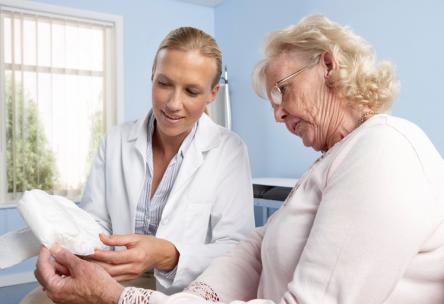Changing hormones can trigger incontinence in some women. Here’s what you need to know

Some 33 million Americans—and about 1 in 4 women—grapple with a leaky or overactive bladder. While there are several root causes of these uh-ohs, there’s no doubt that “menopause accentuates an increased need to go,” says Lisa Hawes, M.D., a female urology specialist with Chesapeake Urology Associates in Maryland and spokesperson for the American Urological Association.
During menopause, a woman’s estrogen levels start to decline. “Women’s pelvic floor muscles, bladder and urethra are all estrogen sensitive,” says Dr. Hawes. So when levels of this hormone begin to drop in the 1 to 3 years before the onset of menopause, as well as during menopause, the urge to go can be impossible to fight for some women. Other natural, age-related changes contribute to the overall weakening of the bladder and pelvic floor muscles. And factors such as weight, number of childbirths, and certain medications and medical conditions also play a role.
“Fortunately, not every woman going through menopause will experience urge incontinence,” she says. But for those who do, the condition can really rewrite the script of day-to-day living. “Think about it—if you’re worried about embarrassing leaks or constantly having to find a bathroom, it can be tough to plan out your day.”
Tough, but not impossible: These strategies can help.
Keep your weight in check. Carrying extra pounds puts pressure on the bladder and can aggravate the symptoms of incontinence. If you’re overweight, losing even a few pounds can help. And if your weight is fine, take measures to keep your numbers on the scale from moving up.
Practice your Kegels. Kegel exercises are subtle moves that strengthen the pelvic muscles and may help reduce leakage. To do them, practice squeezing only the muscles in your genital area, as if you’re trying to stop the flow of urine. Aim to squeeze and hold for 3 seconds, relax and repeat 10 times, working your way up to 3 sets of 10. Before you begin Kegel exercises, talk to a health professional to ensure you are doing these exercises correctly.
Limit acidic foods. Many foods are high in acid, which can trigger the urge to go. Common culprits include spicy food, chocolate, fruit juices, carbonated drinks, alcohol, and your beloved cup of morning coffee or tea—it’s the acid, not the caffeine, that poses a problem, so decaf isn’t the antidote. Dr. Hawes suggests paying close attention to your body’s cues after meals and snacks. Within a few days, you’ll have a good idea of your triggers.
Pamper your digestive system. “Constipation control is very important for women trying to manage urge incontinence,” says Dr. Hawes. Any backup of stools is going to put unwanted pressure on your bladder. Eat plenty of vegetables, fruit, and whole grains to get adequate amounts of fiber in your diet, and stay well hydrated to keep everything moving freely in your system.
Consider medication. “Urge incontinence is a medical condition, and there’s help for it. But first you need to let your doctor know what’s going on and how it’s impacting your life,” says Dr. Hawes. In addition to the above lifestyle modifications, she says there are several different prescription medications that might be a good fit for you.


